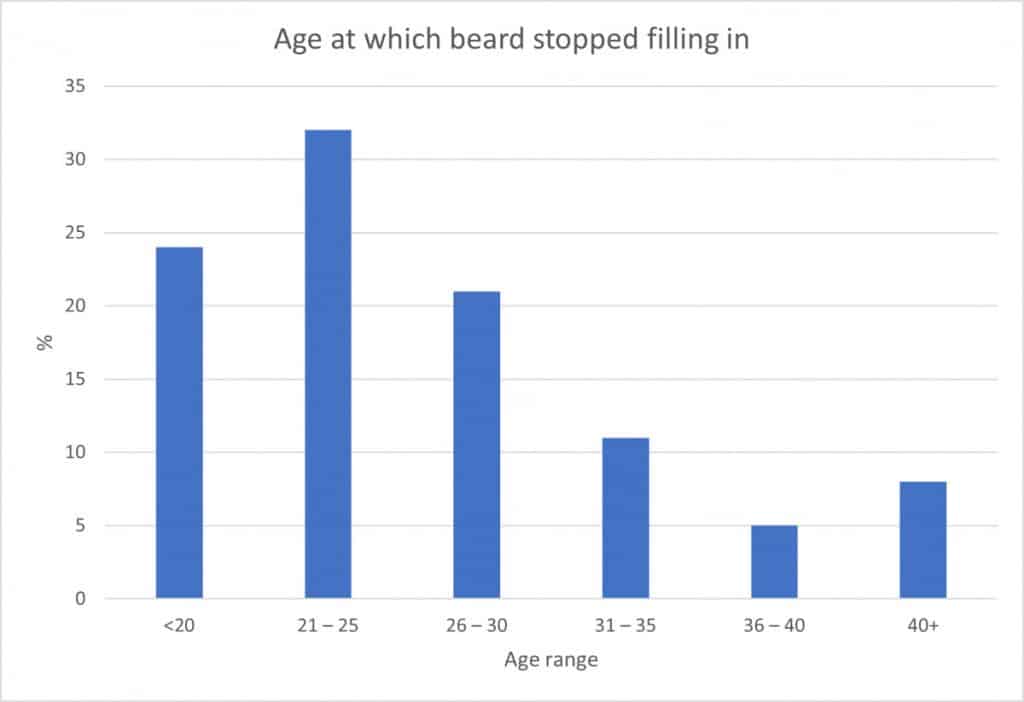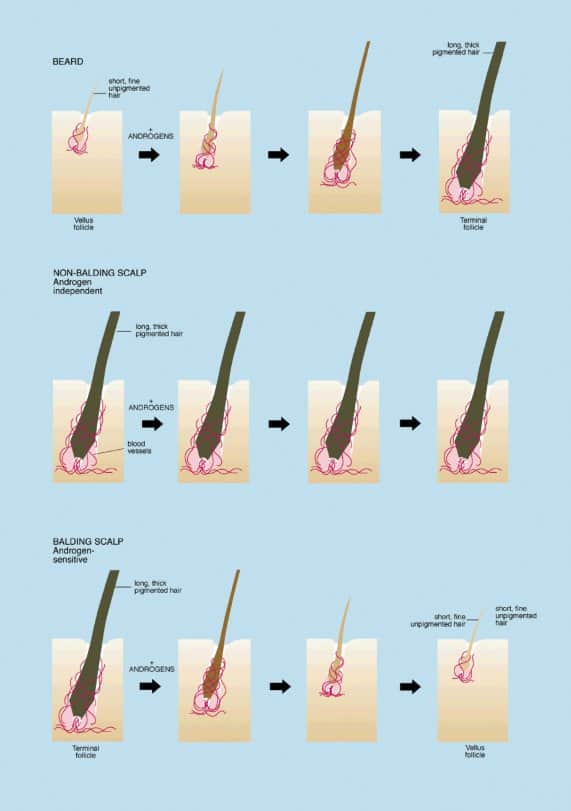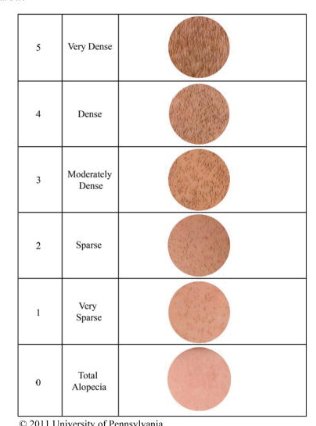In the early stages of growing a beard it can be very difficult to know if your beard has potential. I have grown a massive beard over the last couple of years but the early stages had me asking some fundamental questions on whether or not I would be able to grow a beard I was happy with. In this article we going to cover all of the questions that you need to ask yourself to work out if your beard has potential to turn into a beard that you are proud of.
To determine if your beard has potential, you should grow out for at least three months before making a decision. If you are past the age of 25, you have a significant number of black hairs in a reasonable coverage and density it is likely you will be able to grow a thick beard that you are proud of.
Other indicators include whether your family contains men with good beards and that you have a healthy lifestyle which can help support your beard growing endeavours – this includes good diet, sleep, and exercise habits.
Here are all of the important questions that you need to ask yourself to work out if your beard has the potential of turning into a beard that you are happy with.
Article Contents
How do you know your beard has potential?
It has to be said that everyone that has the potential to grow a beard of any density or thickness has potential. The potential of your beard is limited by working with what you are able to grow and highlighting its strong points whilst also covering up any weaknesses with trimming and fading your beard style into the areas with less density or coverage.
When we think of a “good beard” we often think of a full thick Viking like beard and the reality is that not a lot of people can actually grow this type of beard.
You are much more likely to be able to grow a beard with patches, uneven growth, and quirks that only apply to your beard.
So, go easy on yourself and your beard when going through this list of beard potential questions.
Grow it out to find out – wait three months
The first thing you should do is grow it out to actually find out if you are able to grow a beard.
The proof is in the pudding – as my grandmother used to say!
A lot of people judge their beard far too early on in the beard growing process. In the first few weeks of beard growth it is very unlikely that you will be able to determine if your beard has potential.
You need to grow out your beard for at least three months before you are able to determine whether or not your beard has the potential to turn into a beard that you are happy with.
After about three months my beard like this:

You can see that my beard still hugs the contours of my face but I have got a good opportunity to check its density and coverage when it is this long.
A lot of the images that I see online on forums and other user generated content sites are asking whether or not there beard has potential after only about 3 to 4 weeks of growth. An example of this was published on Reddit by user u/prewster99:

You can see that although there are patches, and areas of low density there is a lot of opportunity to grow their hairs around the problem areas to compensate for the issues. Also, allowing the beard to grow to the point where you cannot see the skin is an important step in determining if your beard has potential.
Are you prime beard growing age?
Another issue that people face when they are judging their beard is that they are too young. There is actually a huge range of ages of when people actually go through puberty.
At what age does a beard grow?
A scientific study published in 1980, looked at the normal ages of pubertal events among American males and females. They found that the median age at which men developed facial hair was at the age of 15 years old. 20% of the boys investigated had facial hair at the age of 13. Whereas by the age of about 16, 95% of the men had facial hair.
Considering that this is the onset of a beard growth in males it is clear that there is plenty of opportunity in future years for your beard to become thicker and fuller.
A more recent study published in 2010, they found that black boys developed secondary sex characteristics about seven months earlier than Caucasian boys. This demonstrates the difference between the genetics of different nationalities which could indicate why we see a significant difference in the production of a beard between people of different races.
When does a beard stop filling in?
I spent a fair amount of time looking at popular forums and user generated content sites to find out when people’s beard stopped growing and stopped filling in.
Here is a graph which highlights the age at which a beard stop filling in according to online beard growers.

You can see from the above graph a significant number of people (about 25% of the data collected) said that their beard stops filling in at the age of 20 or under. I am suspicious of this just because those people are likely to have very strong growth and it is likely their beard still continued to develop after the age of 20. There is also some sort of macho boasting which can go on when they talk about how young they develop a beard.
You can see that a huge number of people actually continue to grow a beard well into their 30s. If you are older than 25 there is still a chance that your beard will continue to develop. About 21% of the people that were polled online said that they developed their beard between the ages of 26 and 30 with a significant number of them tailing off into later years of life up until the age of 40.
Hairs turning black
Another aspect that is very important is that you have hairs on your face that are turning black which were once white and transparent.
When a man strikes puberty the testosterone and its metabolised version, DHT, floods through the body. When it reaches a hair follicle which has androgen (sex hormone) receptors it can turn a white and transparent hair – known as vellus hair – into a thick terminal hair.
The growth cycle of vellus hair to terminal hair follows the following path:
- Lanugo – this type of hair is first produced by beetle hair follicles and is present on the foetus from about 16 weeks of gestation up to 33 weeks until birth.
- Vellus – the less hair replaces the previous type of hair and is present in children and adults. It is an essential part of controlling your temperature as well as providing sensory input for detecting and sensing 3D space around you.
- Terminal – vellus hairs can turn into terminal hairs once they have reached puberty. The notable change is that vellus hair is stronger, longer, and more noticeable due to its thickness.
This transition occurs because some parts of your body have receptors which respond to testosterone and its derivatives such as DHT. A study published in 2008 goes through the effect of these hormones and hair growth.

If the hairs on your face are turning from vellus to terminal – it can take many years for this transformation to be complete. Therefore, you should wait until the hormones have had time to completely change the hairs on your face.
What is the density like?
Another important question to ask yourself to determine whether or not your beard has potential is to look at the density of your beard hairs.
The density of your hair placement will also determine a thick your beard looks when it has grown.
A 2011 study found that you can reliably determine the density of a beard by using a simple photographic method. Take a look at the image from the University of Pennsylvania for examples of the hair density that they found.

But don’t worry! There are plenty of bead styles that do not require a think density on your cheeks. Work with what you have and be super confident in your choice. That is always the best way to grow your beard! It makes you more attractive too!
Take a detailed look at the density on your face – as long as it is between three and five on the above image you can be confident that, given time, your beard will end up looking awesome.
Do you have even coverage?
Coverage is a little bit different to density when it comes to a beard. Density talks about a localised area and the distance between hair follicles.
When I talk about coverage I mean: is the hair evenly distributed across your entire face?
For many people beard is are patchy in some areas and not patchy in others. This is just a quirk of how beards grow and everyone is a strong growth areas and weak growth areas are different.
Some people struggle to grow significant amount of beard hair on their cheeks whilst others struggle to connect their moustache to their beard.
If you are very lucky you will have a homogenous distribution of beard hair all over your face.
This is less important than density. However, if you have large gaps or areas on your face where beard hair does not grow it can be hard to cover them up by growing out your beard. In that case, I recommend that you choose a beard style that is perfect for your type of coverage. It may not be the beard that you always dreamt of but it will be the best representation of a beard that you can grow.
Do your male relatives have a good beard?
Genetics is the number one indicator on whether or not your beard has potential.
By looking at the members of your family you can get a good indication of whether or not you are able to grow a beard that you can be proud of.
The genes required to grow a good, thick and lush beard comes from both your maternal and paternal (mum and dad’s) gene pool.
The issue is that the inheritance of genes can get pretty complicated. For example, your brother may be able to grow a beard and you can’t!
That’s because your brother, like you, inherits 50% of their genetic makeup from their father and 50% from their mother BUT they could be different genes!
We even get a very small amount of genes from even more distant relatives. You share about 0.78% of your DNA with your great-great-great-great-great grandfather (aka 5th great-grandfather). So, even though it is very unlikely that your beard growing potential comes from your great-great-great-great-great grandfather – it is a possibility.
That is why sometimes why siblings may have a very different appearance despite having the same mother and father.
These are all of the things that you should look at to determine whether or not your beard has potential. There are also some aspects of beard growth which can signal that you will not be able to grow a beard and your beard doesn’t have potential. Let’s take a look at them now.
Signs you can’t grow a beard
In this section we can have a look at the signs that you cannot grow beard and that your beard is likely to develop past what you are seeing at the moment.
No facial hair in the family
If no one in your family is capable of growing a good, thick beard you probably will not be able to grow one either. Have a look at your dad, his brothers, and your uncles on your mother’s side to get a holistic view of the sorts of beard great potentials in your family.
Some ethnic groups – such as Asian people – really struggle to grow a beard because they simply do not have the amount of coverage of hair required for a thick beard.
Thin white hairs only
If you only have thin white hairs across the majority of your face all you do not have any hair whatsoever it is likely that will not be able to grow a beard of any substantial thickness.
Testosterone and DHT requires the presence of hairs which are reactive to hormones to turn into thick terminal hairs.
Get up and close with your beard and facial hair to determine what sort of hairs you have. If you only have thin white hairs and none of the surrounding hairs have reacted to testosterone – assuming that you have been through puberty – they probably are going to stay thin and vellus.
Poor lifestyle choices
Lastly, poor lifestyle choices can significantly impact the ability for your body to produce thick beard hairs. Things like diet, sleep, and exercise are all areas of your life where you should aim to create positive habits.
Diet
What you eat has a huge impact on hormone levels in your body including testosterone.
A diet based on whole foods is best for encouraging testosterone production. A healthy balance of fat protein and carbs, when combined with resistance training, can boost your beard growing hormones.
Here is my YouTube video wow go through seven foods that can increase beard growth – I actually include full vegetarian options as well:
Sleep
Sleep is a very important part of remaining healthy being sleep deprived is the number-one way to make sure that your body is not running as good as it can.
We are seeing more and more research into the dangers of long-term stress that can increase the amount of cortisol in your body. Cortisol is a hormone related to stress and when it goes up in the body testosterone goes down!
Reduce the repetitive stressful situations in your life.
The ideal amount of sleep varies from person to person but a study has shown that sleeping only five hours per night resulted in a 15% decrease in testosterone levels. You should aim to get about 7-10 hours of sleep a night.
Exercise
Exercise is the most effective ways to boost testosterone and it has the added benefit of being a way to prevent many lifestyle-related diseases.
Studies have shown that weight lifting is the best type of exercise you can do to boost your testosterone. High-intensity interval training comes in a close second but any type of exercise that you do will help in some way!
I run approximately 30 km per week and have found that my mood and my health have improved significantly over the past year. I am in no doubt that this has helped keep my beard looking thick and full and allowed me to continue being proud of my beard.
Summary
In this article we went through all the ways to determine whether your beard has potential. We have talked about genetics, testosterone, vellus and terminal hairs, and the importance of looking at yourself in terms of your health, sleep, and diet.
Ultimately, you shouldn’t judge your beard grow potential to early and you should wait for at least three months of growth before determining whether or not your beard has potential to become the beard of your dreams.



